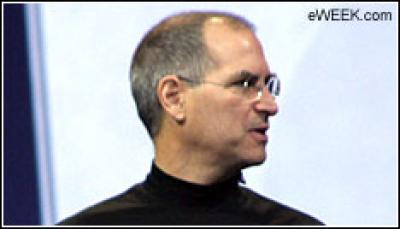Jobs Misses Apple’s WDC Conference

The number of iPhone and iTouch users continues to spiral up despite the recession: from 1 million active users in 2002 to 25m in 2007 to an estimated 75m in 2009
The biggest question about what might happen June 8 at Apple’s Worldwide Developers Conference was whether Apple CEO and co-founder Steve Jobs, a cancer survivor suffering from a lengthy illness involving a hormonal imbalance, would make his first public appearance since October 2008.
Well, he did not, ostensibly electing to work from his Palo Alto, Calif., home on this big day for the company. Still, Apple had plenty of product news to tell 5,200 MacOS X and iPhone developers and 800 analysts and media types congregated here at Moscone West, and interest was at a high level.
In Jobs’ place, a trio of Apple executives took turns leading the keynote address. Apple Senior Vice President of Worldwide Product Marketing Phil Schiller introduced the 2-hour keynote session by describing the new Apple iPhone 3G S (“S” is for “speed”), new MacBook Pro and MacBook Air notebook computers, and the MacOS X Snow Leopard operating system.
“We’ve gained a lot of momentum,” Schiller said, in an understatement. “We’ve moved from 1 million active iPhone and iTouch users in 2002 to 25 million in 2007—to an estimated 75 million in 2009.”
Senior Vice President of iPhone Software Scott Forstall said iPhone OS 3.0, which was previewed for the media back on 17 March, will become generally available on J17 une. Forstall went into some detail about the many new applications now available for the iPhone.
iPhone OS 3.0 is the engine that makes all these new applications run. The OS includes an updated SDK (software development kit) featuring more than 1,000 new APIs, including In-App Purchases, new peer-to-peer connections, a new application interface for accessories, access to the iPod music library, a new maps API and push notifications.
Even though the upgraded operating system and new MacBooks drew a lot of attention, the iPhone 3G S caused the biggest stir in the audience.
The iPhone 3G S with the iPhone OS 3.0, available beginning 19 June, is more than simply a beefed-up version of the iPhone 3G; it is almost an entirely new product. At US pricing of $199 (£123) for a 16GB edition and $299 (£186) for a 32GB version (plus the $100-per-month connectivity fee]), it is reasonably priced for a device with all the new functionality it sports.
Forstall highlighted several of those new capabilities. Here are some of them:
—Cut, Copy and Paste: Amazing as it seems, this relatively simple-sounding tool has not yet been available on the iPhone. With OS 3.0, users will be able to select type, photos or graphics (from a Website, for example), copy them, and then enter them into another application—such as e-mail or a text message—as needed. It took longer to develop, Forstall said, due to security concerns.
—Improved Maps: In partnership with Google Maps, Apple has made the core of the map application available free to developers, so they can consider using them in the applications they intend to build. Included are all the features currently in Google Maps: regular map view, topographic view and street view, as well as annotations and location tracking.
—Accessories: More connections to iPhone accessories will now available. For example, stereo sound balancing and other, more granular fine-tuning features can be added to the iPhone when it plugs into a portable speaker set to play music. The is also a new application developed by Line 6 and Planet Waves that creates a digital control for a guitar on the iPhone in which the sound and tuning of the guitar can be modified.
—New Peer-to-Peer Capability: Users of the new OS will be able to link up with other iPhone users via stereo Bluetooth; thus, they will be able to browse another user’s iTunes collection of music and videos, and even stream the content to their own iPhones. The iPhone users have to be within range of Bluetooth, of course. Users will be able to play games against each other (think kids in the back of a car on a long trip); no Wi-Fi network is needed. All the iPhones will find each other automatically.
—New Push Notifications (like Notifications on Facebook) help scale out business apps. This is a unified, generic service for all platforms and developers, and it is located in Apple’s own server farm, Forstall said. An ESPN app that sends out 50 million news alerts per month is an example of this; it can scale out with impunity using this capability. Lots of other applications are expected to follow suit.
—Johnson & Johnson’s Lifescan application for diabetics can be a real time-saver. Users can keep track of their dosage history and schedule, and calculate the amount of each dosage based on what they are eating that day and on their physical activities. All are major factors in getting an insulin dosage correct.
—In-App Purchases: When using a paid Web service, such as reading the Wall Street Journal or subscribing to a sports or gaming service, you can choose to maintain your subscription or membership without having to leave the application itself. The new OS brings up a service that links to the site you’re using and conveys the payment.
—Hardware Encryption: If you lose the device, you can wipe all the data off it remotely—a useful security service, to be sure.
—Longer battery life: About twice as much as the 2G iPhone, Apple said.
Apple also said it has marked down its regular 3G iPhones in the US to $99 starting 8 June.